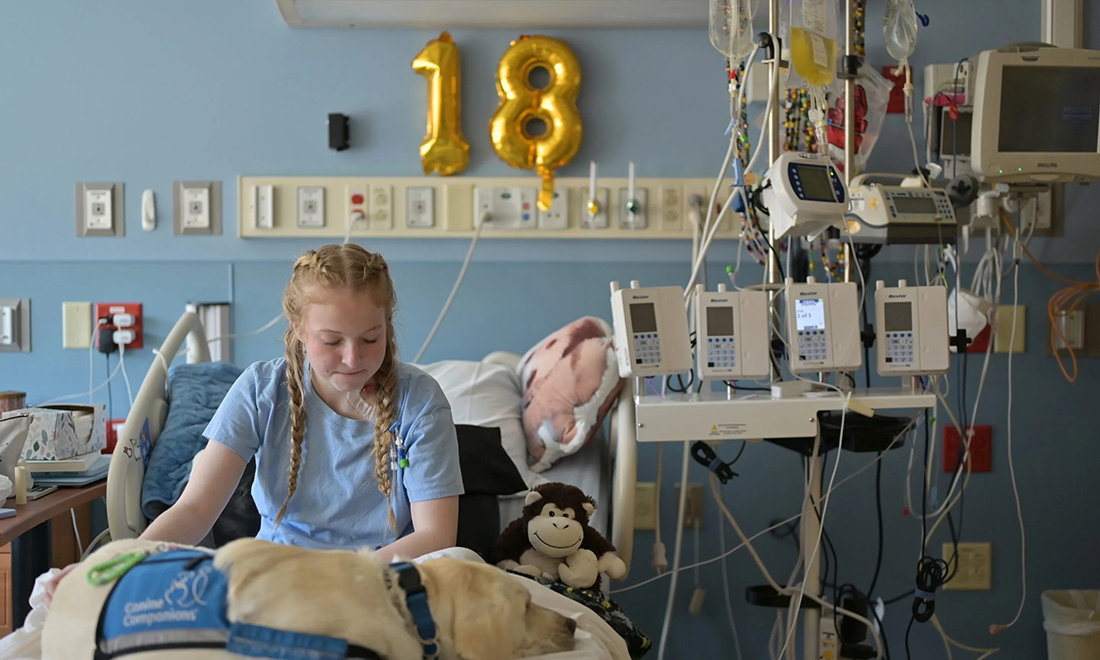
一项具有里程碑意义的新研究显示,全球近半数新冠幸存者在四个月后存在长期症状,包括儿童和成年人患者。
英格兰莱斯特大学(University of Leicester)的研究人员分析了近200项之前的新冠患者研究,共涉及近75万名患者。这些患者分布在世界各地,包括住院患者和未住院患者。
超过45%的研究参与者在初次感染四个月后至少仍有一种长期症状。四分之一患者有疲劳症状,有类似比例的患者表示感觉疼痛或不适。此外,研究显示,有不到四分之一患者表示存在睡眠障碍、气喘和无法正常开展日常活动等问题。
通常无法找到临床异常能够解释这些症状。但许多曾因新冠住院的患者报告了某些迹象,包括肺部结构和肺功能发生变化等。接近一半住院患者出现了CT扫描和/或X光扫描异常,另有近三分之一患者肺部对一氧化碳的扩散能力下降。
报告的作者写道:“肺功能变化与SARS和MERS等其他病毒感染者经历的变化类似。”
研究发现,在未住院治疗的新冠幸存者中,超过三分之一在四个月后有长期症状。
作者写道:“这么多患者存在长期新冠症状的原因依旧不明。”他们表示可能的原因包括器官损伤、炎症、免疫系统变化和心理作用等。
有研究发现女性出长期新冠的比例更高,但莱斯特大学的研究并未发现任何特定年龄群体或性别经历令人虚弱的症状比例更高。研究人员无法可靠地评估长期新冠与种族的关系,因为只有四分之一研究提供了参与者的种族或民族。
据美国人口普查局(U.S. Census Bureau)今年夏天收集的数据显示,美国约5,000万成年新冠患者中,近20%表示存在长期新冠症状。
长期新冠被粗略定义为持续存在或在初次感染新冠康复很久以后出现的症状,但目前没有一种被广泛接受的统一定义。许多专家主张,最合理的定义是感染新冠之后出现的一种与慢性疲劳综合征类似的状况,类似于感染疱疹、莱姆关节炎疾病甚至埃博拉病毒之后出现的其他病毒后综合征。专家们认为,器官损伤和重症治疗后综合征等感染新冠之后的其他并发症,不应被定义为长期新冠。(财富中文网)
翻译:刘进龙
审校:汪皓
一项具有里程碑意义的新研究显示,全球近半数新冠幸存者在四个月后存在长期症状,包括儿童和成年人患者。
英格兰莱斯特大学(University of Leicester)的研究人员分析了近200项之前的新冠患者研究,共涉及近75万名患者。这些患者分布在世界各地,包括住院患者和未住院患者。
超过45%的研究参与者在初次感染四个月后至少仍有一种长期症状。四分之一患者有疲劳症状,有类似比例的患者表示感觉疼痛或不适。此外,研究显示,有不到四分之一患者表示存在睡眠障碍、气喘和无法正常开展日常活动等问题。
通常无法找到临床异常能够解释这些症状。但许多曾因新冠住院的患者报告了某些迹象,包括肺部结构和肺功能发生变化等。接近一半住院患者出现了CT扫描和/或X光扫描异常,另有近三分之一患者肺部对一氧化碳的扩散能力下降。
报告的作者写道:“肺功能变化与SARS和MERS等其他病毒感染者经历的变化类似。”
研究发现,在未住院治疗的新冠幸存者中,超过三分之一在四个月后有长期症状。
作者写道:“这么多患者存在长期新冠症状的原因依旧不明。”他们表示可能的原因包括器官损伤、炎症、免疫系统变化和心理作用等。
有研究发现女性出长期新冠的比例更高,但莱斯特大学的研究并未发现任何特定年龄群体或性别经历令人虚弱的症状比例更高。研究人员无法可靠地评估长期新冠与种族的关系,因为只有四分之一研究提供了参与者的种族或民族。
据美国人口普查局(U.S. Census Bureau)今年夏天收集的数据显示,美国约5,000万成年新冠患者中,近20%表示存在长期新冠症状。
长期新冠被粗略定义为持续存在或在初次感染新冠康复很久以后出现的症状,但目前没有一种被广泛接受的统一定义。许多专家主张,最合理的定义是感染新冠之后出现的一种与慢性疲劳综合征类似的状况,类似于感染疱疹、莱姆关节炎疾病甚至埃博拉病毒之后出现的其他病毒后综合征。专家们认为,器官损伤和重症治疗后综合征等感染新冠之后的其他并发症,不应被定义为长期新冠。(财富中文网)
翻译:刘进龙
审校:汪皓
Almost half of COVID survivors globally—both children and adults—have lingering symptoms four months later, according to a landmark new study.
Researchers at the University of Leicester in England performed an analysis of nearly 200 studies of prior COVID patients, involving nearly 750,000 people in all. The patients—some of whom were hospitalized and some of whom weren’t—lived across the globe.
More than 45% of study participants had at least one lingering symptom four months out from their initial infection. A quarter of the patients reported fatigue, and a similar number said they felt pain or discomfort. Meanwhile, sleep issues, breathlessness, and problems participating in normal daily activities were reported in just under a quarter of patients, according to the study.
Often, no clinical abnormalities could be found to explain such symptoms. But some signs were reported in many patients who had been hospitalized with COVID, including changes in lung structure and function. An abnormal CT scan and/or X-rays were found in nearly half of previously hospitalized patients, in addition to a decreased capacity to diffuse carbon monoxide in nearly a third of patients.
“Changes in pulmonary function are similar to those observed following other viral infections including SARS and MERS,” the authors wrote.
When non-hospitalized COVID survivors were singled out, more than a third of them had lingering symptoms at four months, the study found.
“The reasons as to why so many patients are experiencing Long Covid remains unknown,” the authors wrote, adding that possible causes include organ damage, inflammation, altered immune systems, and psychological effects.
While some studies have found a higher rate of long COVID in females, the study out of Leicester didn’t find that any particular age group or gender experienced s of the disabling condition. Researchers weren’t able to reliably assess any potential association with race, as only a quarter of studies examined provided participants race or ethnicity.
Nearly 20% of American adults who’ve had COVID—an estimated 50 million—report having long COVID symptoms, according to data collected by the U.S. Census Bureau this summer.
Long COVID is roughly defined as symptoms that persist or appear long after the initial COVID infection is gone, but a consensus definition has not yet been broadly accepted. Many experts contend that the condition is best defined as a chronic fatigue syndrome-like condition that develops after COVID illness, similar to other post-viral syndromes that can occur after infection with herpes, Lyme disease, and even Ebola. Other post-COVID complications, like organ damage and post-intensive-care syndrome, should not be defined as long COVID, they say.






